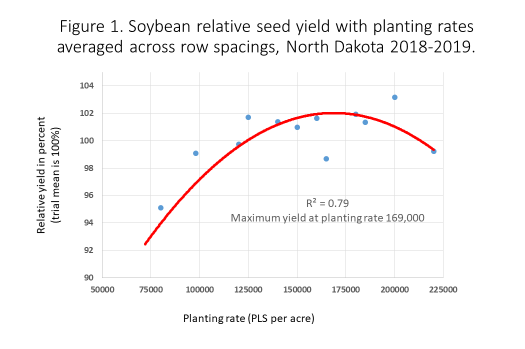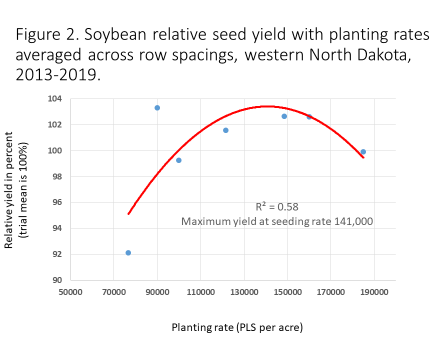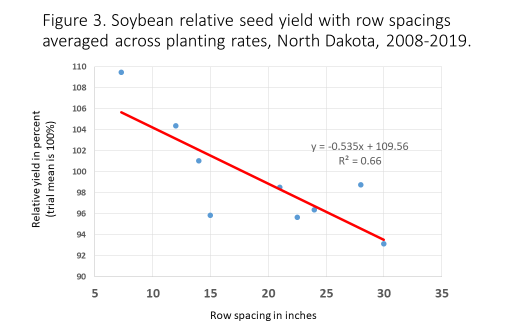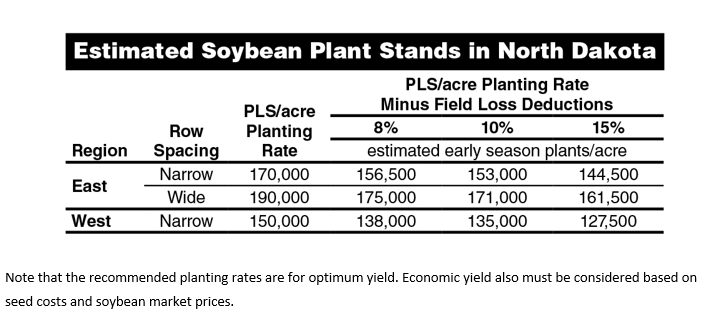Soybean Seeding Rate and Row Spacing (04/29/21)
North Dakota State University has a long tradition of recommending the establishment of a soybean population of 150,000 plants per acre, across row spacings. NDSU has conducted numerous field trials during recent years to examine the impact of planting rates and row spacings on soybean production. With the large amount of data available from across the state, the opportunity existed to re-evaluate the current recommendation and provide a more precise soybean planting rate and row spacing recommendation. This article summarizes the evaluation of data generated by 37 NDSU soybean planting rate and row spacing trials conducted during 2008 through 2019 in North Dakota.
This work resulted in the NDSU Extension publication “Soybean Response to Planting Rates and Row Spacings in North Dakota” (A1961). It is available at https://www.ag.ndsu.edu/publications/crops/soybean-response-to-planting-rates-and-row-spacings-in-north-dakota

Individual Factors
- Across North Dakota and row spacings, the planting rate of about 170,000 pure live seeds (PLS) per acre optimized soybean seed yield. In eastern North Dakota trials, 8% of planted PLS per acre did not develop into viable soybean plants. Assuming 8% of PLS do not result in established plants across North Dakota, and using 170,000 PLS per acre, about 155,000 plants per acre would be expected to maximize yield. Within regions, optimum yield occurred at 180,000 and 140,000 PLS per acre in eastern and western North Dakota, respectively.

- Across North Dakota or by regions, narrow rows (less than 15 inches) consistently provided greatest soybean yield.

Factor Combination (by regions)
- In eastern North Dakota, the combination of narrow rows (12 to 14 inches) and planting rates of about 170,000 PLS per acre provided optimum yield. If planting in wide rows (24 to 30 inches), planting rates to reach the optimum yield were about 190,000 PLS per acre.
- In western North Dakota, the combination of narrow rows (7 to 10 inches) and planting rates of about 150,000 PLS per acre provided optimum yield.

Extension Cropping Systems Specialist
Extension Agronomist Broadleaf Crops


